Cool Class: Art and Architecture of India
Students experience the living heritage of Indian art and architecture through the annual Diwali festival of lights celebration on campus each October.
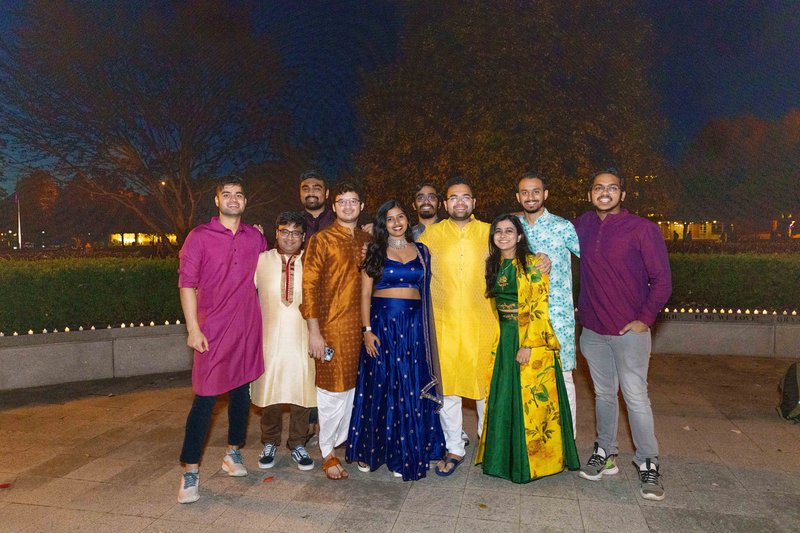
Students pose for a photo during the 2022 Diwali celebration on the Orange Grove at Syracuse University.
In 2015, College of Arts and Sciences art history Professor Romita Ray organized Syracuse University’s first public Diwali celebration on campus. Diwali, also known as the Festival of Lights, is a Hindu festival held each October or November in India where people use oil lamps, candles, and rangoli (a type of floor art) to decorate homes, streets and public buildings.
Ray, who specializes in the art and architecture of the British Empire in India, thought by bringing the festival to Syracuse it would offer a new way for students in her Art and Architecture of India course (HOA 396/ARC 331/SAS 396) to connect with the traditions and culture of India. She says her students enthusiastically joined in, and have been instrumental in helping the celebration grow each year - a testament to the power of art.
“One of the objectives of this course is to experience the living heritage of Indian art and architecture,” notes Ray. “Architecture becomes ethereal, and art comes alive through the interplay between light and design during Diwali. I wanted my students to recreate this aesthetic experience, and in doing so, to experience a vibrant cultural tradition that they may or may not be familiar with.”
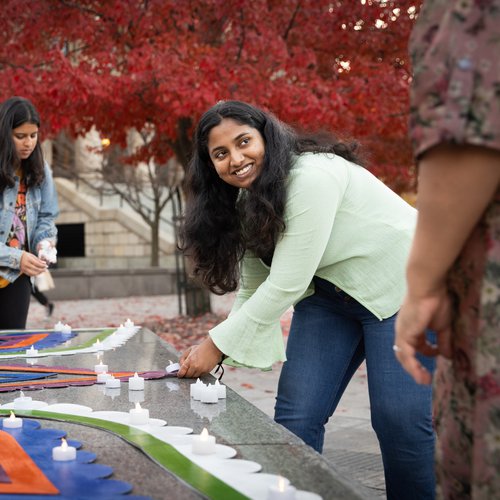
In 2021 and again this year, Ray and her students collaborated with the National Organization of Minority Architecture Students at Syracuse University (NOMAS) to light up over 2,500 tea lights. The NOMAS students, many who are enrolled in Ray’s Art and Architecture of India class, created rangoli patterns that were installed in the Orange Grove and illuminated with lights.
“Seeing students come together this way to embrace and celebrate a living art of India is one of the highlights of this course,” Ray says. “With their creative energy, our SU Diwali tradition has expanded in wonderful ways.”
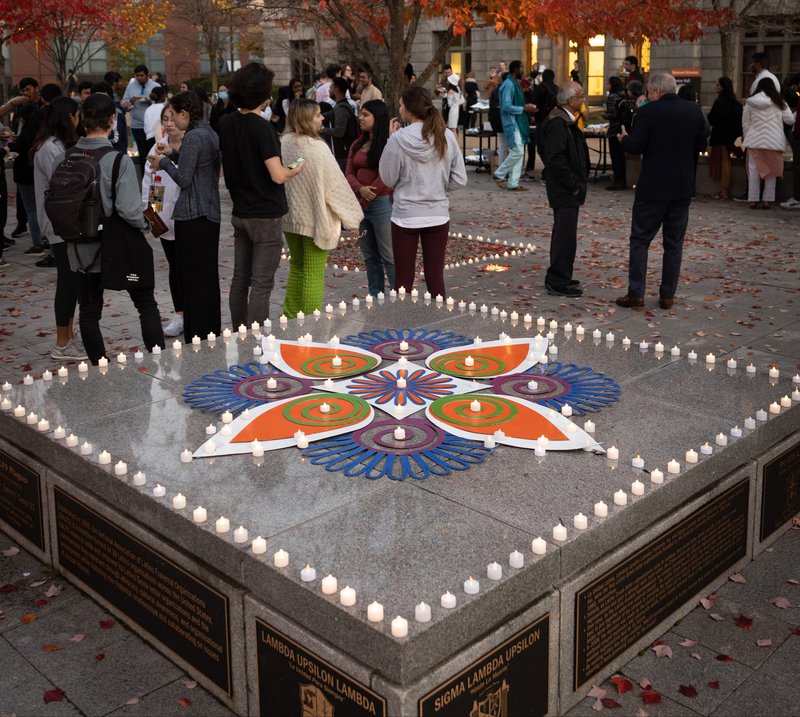
As the sun set and the night sky emerged, the lights sparkled across the grove. Pictured is one of the illuminated rangoli patterns.
In this installment of A&S Cool Classes, we highlight Ray’s Art and Architecture of India course, which is offered each fall.
About the Class:
This course introduces students to 5,000 years of art and architecture in India. They study painting, sculpture, photography and architecture created in the Indian subcontinent from 2600 B.C. to the present. Ray and her students explore major themes, which have emerged from a complex interweaving of art and architectural customs, political histories, religious traditions, cultural norms and histories of technology.
Who Should Enroll?
Anyone, but the course typically features students from art history, English, anthropology, the School of Architecture, the Newhouse School and the College of Visual and Performing Arts.
What are some of the fundamental questions students explore?
In this course, students investigate how different, intersecting cultures shape the making of art and architecture in India. They do this by charting the cultures of the Indus Valley, the influence of Buddhism and Hinduism, the evolution of Indo-Greek links, and the influx of Islam and Christianity. The course also examines the impact of British colonialism, the rise and fall of the British Empire, the role of nationalism in the making of modern Indian art, and the emergence of contemporary art in the post-Independence era.
Hands-on Experience:
The class involves field trips to study two unique collections at Syracuse University: a collection of historic Indian calendar art in the Special Collections Research Center in Bird Library, and a collection of Indian indigenous art in the Syracuse University Art Museum. Students also participate in the Diwali illuminations evening.
Image Gallery from the 2022 Diwali Celebration
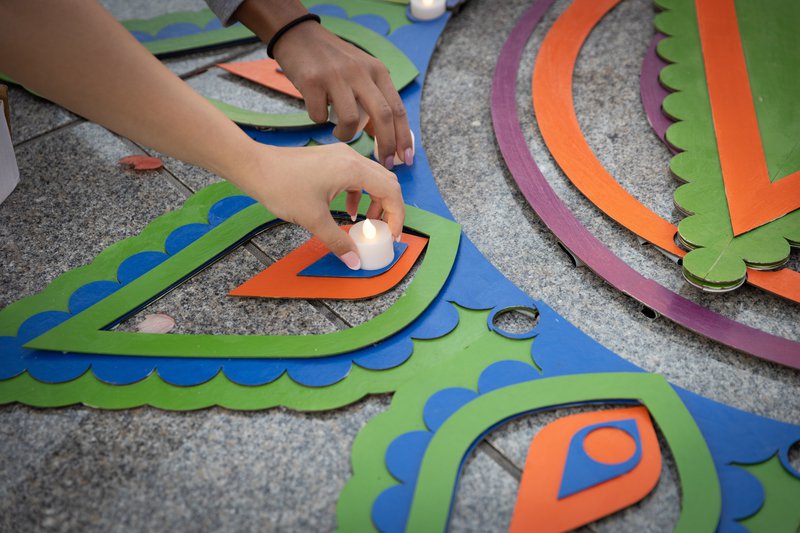
A student illuminates a rangoli pattern with candles.
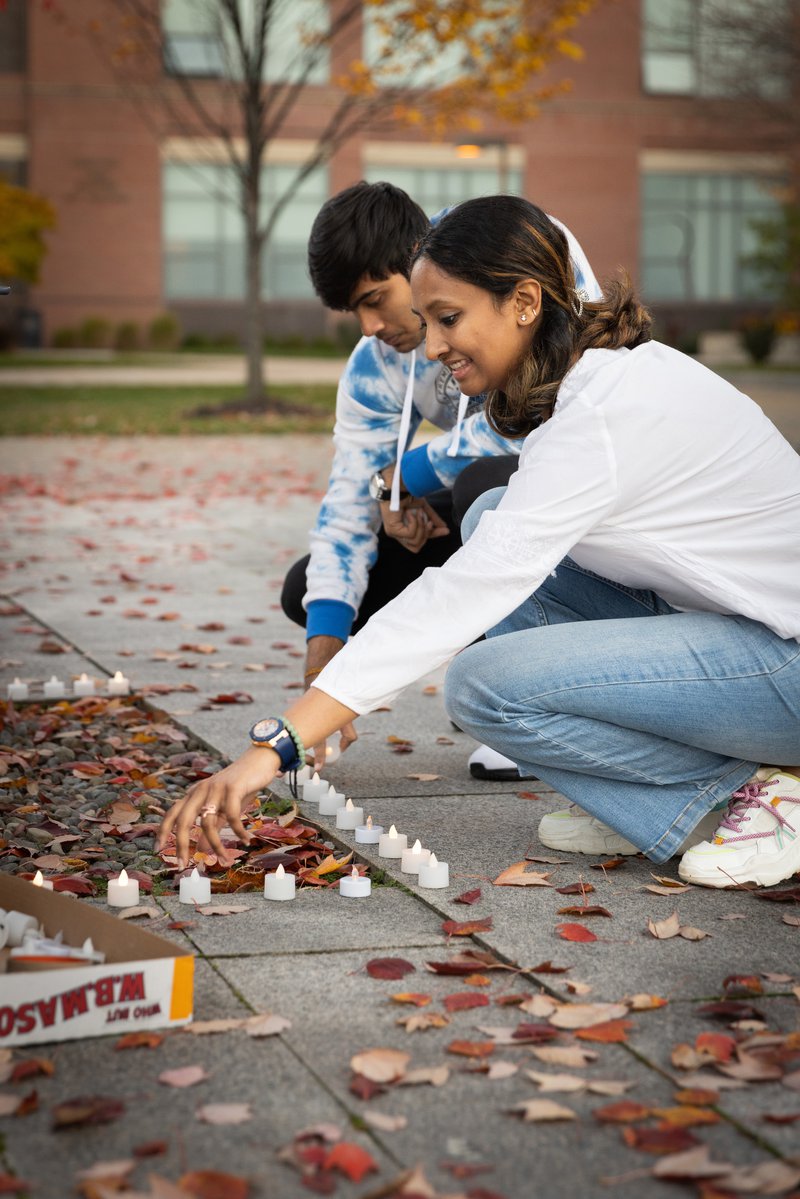
Two students preparing the Orange Grove for the night’s festivities.
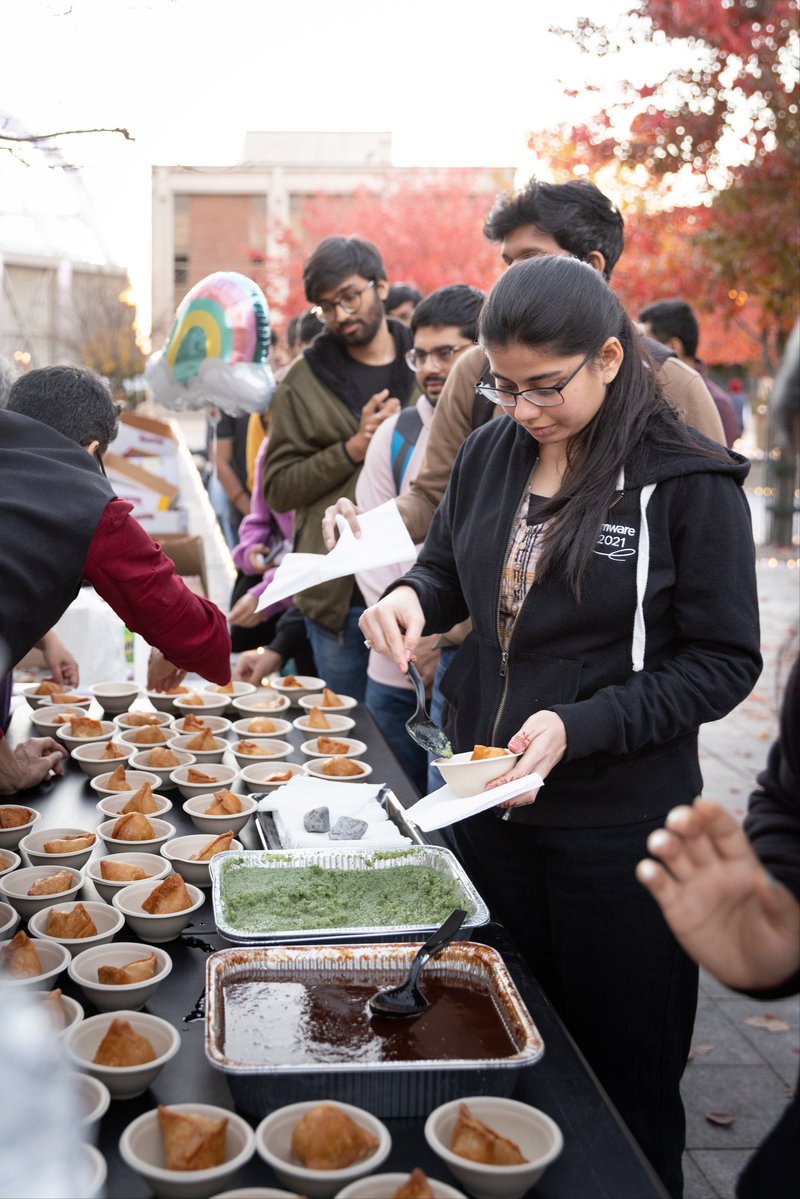
No festival in India is complete without food! Students and faculty served hot samosas and cookies.
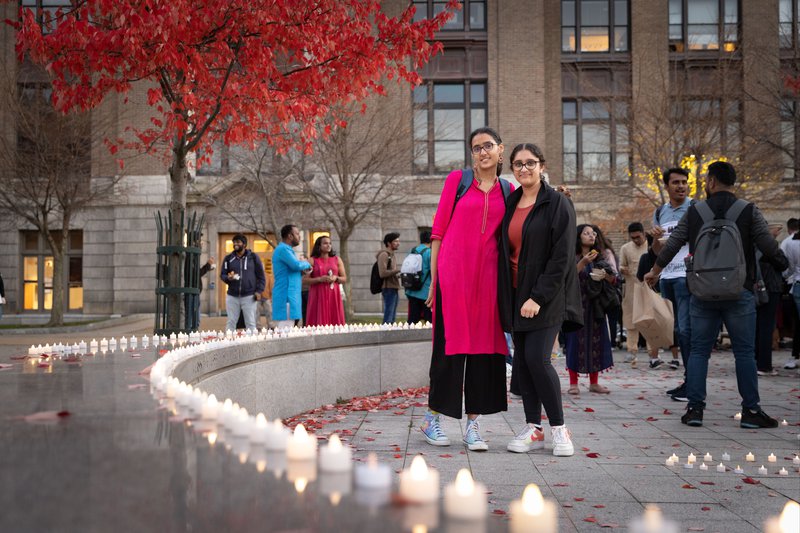
Students pose for a photo during the Diwali celebration.
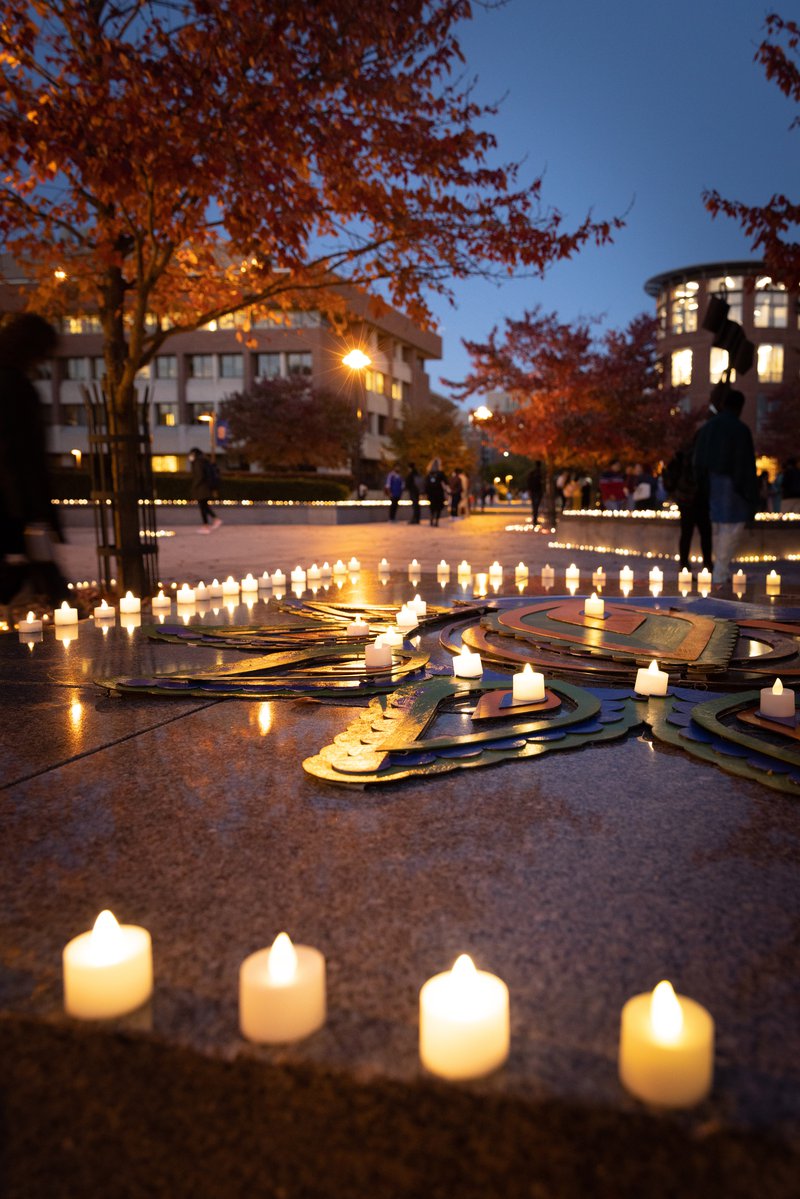
The Orange Grove was illuminated with light to create a magical, peaceful atmosphere.
Featured
Romita Ray Associate Professor and Director of Undergraduate Studies in Art History
